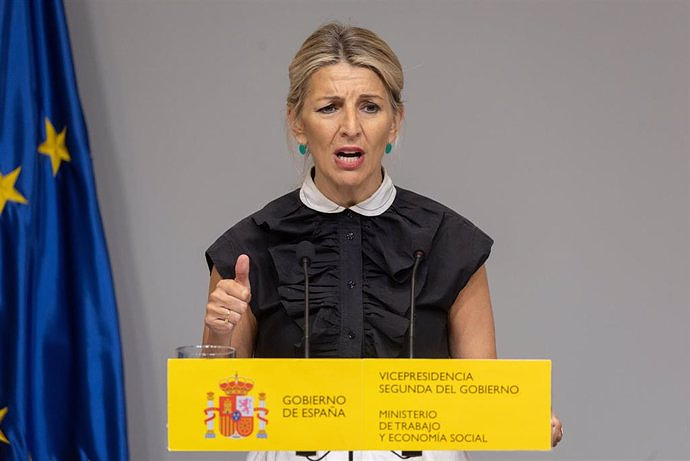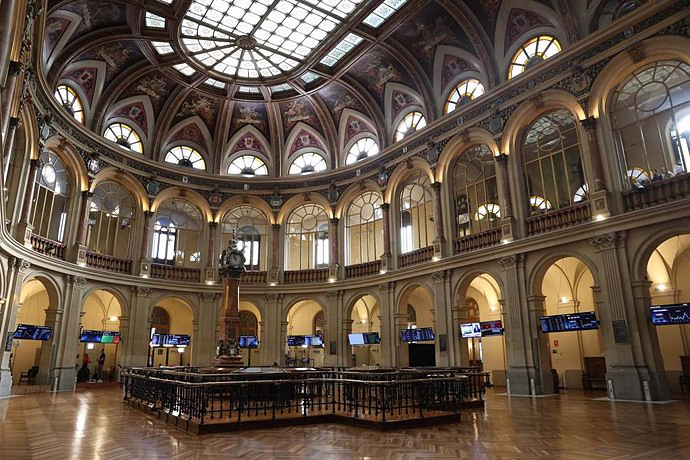The High Court already has 18 vacancies, which represent 14% of its staff
MADRID, 27 Dic. (EUROPA PRESS) -
The retirement of Octavio Herrero, contentious-administrative magistrate of the Supreme Court (TS), exacerbates the crisis in the High Court due to the impossibility of the General Council of the Judiciary (CGPJ) to make discretionary appointments in the judicial leadership while it continues in office .
This Tuesday, the Official State Gazette (BOE) publishes the agreement of the Permanent Commission of the CGPJ declaring the forced retirement of magistrate Octavio Herrero for reaching the legally established age on December 27.
Legal sources indicate to Europa Press that with the departure of Herrero, the Contentious-Administrative Chamber continues to decline, which already has a deficit of 10 magistrates; that is to say, that at present it is integrated by 23 magistrates instead of the 33 that it should have --32 plus the president--.
Looking ahead to next year, the situation in this Chamber could worsen, since Inés Huerta will also retire on March 27. And that without taking into account that several of its members sound like possible candidates for the Constitutional Court (TC) by the CGPJ, which must name two.
It should be remembered that the Contentious-Administrative Chamber, together with the Social Chamber, is the one that has been most affected by the law approved in March 2021 that prohibits the CGPJ from making discretionary appointments while it is in office --as it has been since December 2018 due to the inability of the parliamentary groups to reach an agreement to renew the governing body of the judges and elect the 20 members that correspond to them--.
In addition, both chambers are the ones that accumulate the majority of the claims made before the Supreme Court due to the effects of the pandemic, from labor to administrative claims. The sources point out that this has caused an increase in the cases to be resolved just when there are fewer magistrates, which has resulted in a significant traffic jam at both venues.
According to CGPJ sources consulted by Europa Press, the total number of vacancies in the judicial leadership now reaches 70: 18 of them in the Supreme Court, 32 in the Superior Courts of Justice, 20 in the Provincial Courts and 1 in the National Court.
A year ago, in October 2021, the Governing Chamber of the Supreme Court approved a report from the Technical Cabinet warning that failure to fill the current vacancies in the High Court would imply that 1,000 fewer sentences would be carried out per year.
The document reviewed the impact of the impossibility of filling vacancies in each of the five courtrooms. Except in the Criminal Chamber -which was not affected by the lack of filling vacancies in the immediate future- in the rest of the chambers the situation is defined as very worrisome if the vacancies are not filled urgently.
The Contentious-Administrative Chamber is the most affected by vacancies. It is followed by the Social Chamber, which should have 13 magistrates, including the president. However, there are five vacancies, including that of its last president, María Luisa Segoviano, who retired on October 20. On July 18, Rosa María Virolés will also do so.
Equally critical is the situation of the Military Chamber, where of the 8 magistrates that usually make it up, 6 remain, to which Fernando Pignatelli will join on September 7.
The problem that the Social and Contentious-Administrative Chambers have been facing for some time is that their magistrates must rotate to be able to compose the sections where matters are deliberated and ruled on, a kind of small courts that must have five magistrates.
More comfortable is the situation of the Civil Chamber, where there is only one vacancy, which means that it still retains 9 of its ten magistrates. For now, the only one intact is the Criminal Chamber, which maintains its 15 magistrates. He will suffer his first loss on April 13 due to the retirement of Miguel Colmenero.
Given this situation, in the Supreme Court they remain waiting for two things: an agreement between the Government and the PP to renew the CGPJ, so that the dynamics of discretionary appointments can be recovered; or that the Constitutional Court rule on whether or not the aforementioned reform of the Organic Law of the Judiciary (LOPJ) is constitutional.

 Exploring Cardano: Inner Workings and Advantages of this Cryptocurrency
Exploring Cardano: Inner Workings and Advantages of this Cryptocurrency Seville.- Economy.- Innova.- STSA inaugurates its new painting and sealing hangar in San Pablo, for 18 million
Seville.- Economy.- Innova.- STSA inaugurates its new painting and sealing hangar in San Pablo, for 18 million Innova.- More than 300 volunteers join the Andalucía Compromiso Digital network in one month to facilitate access to ICT
Innova.- More than 300 volunteers join the Andalucía Compromiso Digital network in one month to facilitate access to ICT Innova.-AMP.- Ayesa acquires 51% of Sadiel, which will create new technological engineering products and expand markets
Innova.-AMP.- Ayesa acquires 51% of Sadiel, which will create new technological engineering products and expand markets Cos bids farewell to Congress warning that the lack of political consensus "affects economic prospects"
Cos bids farewell to Congress warning that the lack of political consensus "affects economic prospects" Two workers died and one injured when two floors collapsed in a building under construction in Fuencarral
Two workers died and one injured when two floors collapsed in a building under construction in Fuencarral The Government will wait until after the European elections to propose measures on democratic regeneration
The Government will wait until after the European elections to propose measures on democratic regeneration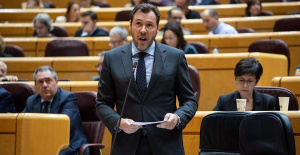 The PP sees Puente as Sánchez's "servant" and the PSOE as a "sect", and the minister accuses them of putting on a show
The PP sees Puente as Sánchez's "servant" and the PSOE as a "sect", and the minister accuses them of putting on a show How Blockchain in being used to shape the future
How Blockchain in being used to shape the future Not just BTC and ETH: Here Are Some More Interesting Coins Worth Focusing on
Not just BTC and ETH: Here Are Some More Interesting Coins Worth Focusing on They develop devices for the precise diagnosis of cancer patients
They develop devices for the precise diagnosis of cancer patients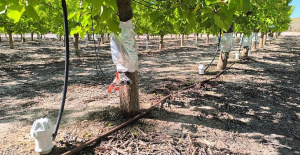 UMH researchers are working on a high-quality apricot crop that requires less irrigation water
UMH researchers are working on a high-quality apricot crop that requires less irrigation water The UPV develops an application to improve the quality of life of patients with glioblastoma
The UPV develops an application to improve the quality of life of patients with glioblastoma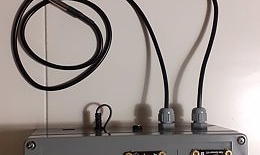 A sensor system obtains the fingerprint of essential oils and detects if they have been adulterated
A sensor system obtains the fingerprint of essential oils and detects if they have been adulterated A million people demonstrate in France against Macron's pension reform
A million people demonstrate in France against Macron's pension reform Russia launches several missiles against "critical infrastructure" in the city of Zaporizhia
Russia launches several missiles against "critical infrastructure" in the city of Zaporizhia A "procession" remembers the dead of the Calabria shipwreck as bodies continue to wash up on the shore
A "procession" remembers the dead of the Calabria shipwreck as bodies continue to wash up on the shore Prison sentences handed down for three prominent Hong Kong pro-democracy activists
Prison sentences handed down for three prominent Hong Kong pro-democracy activists ETH continues to leave trading platforms, Ethereum balance on exchanges lowest in 3 years
ETH continues to leave trading platforms, Ethereum balance on exchanges lowest in 3 years Investors invest $450 million in Consensys, Ethereum incubator now valued at $7 billion
Investors invest $450 million in Consensys, Ethereum incubator now valued at $7 billion Alchemy Integrates Ethereum L2 Product Starknet to Enhance Web3 Scalability at a Price 100x Lower Than L1 Fees
Alchemy Integrates Ethereum L2 Product Starknet to Enhance Web3 Scalability at a Price 100x Lower Than L1 Fees Mining Report: Bitcoin's Electricity Consumption Declines by 25% in Q1 2022
Mining Report: Bitcoin's Electricity Consumption Declines by 25% in Q1 2022 Oil-to-Bitcoin Mining Firm Crusoe Energy Systems Raised $505 Million
Oil-to-Bitcoin Mining Firm Crusoe Energy Systems Raised $505 Million Microbt reveals the latest Bitcoin mining rigs -- Machines produce up to 126 TH/s with custom 5nm chip design
Microbt reveals the latest Bitcoin mining rigs -- Machines produce up to 126 TH/s with custom 5nm chip design Bitcoin's Mining Difficulty Hits a Lifetime High, With More Than 90% of BTC Supply Issued
Bitcoin's Mining Difficulty Hits a Lifetime High, With More Than 90% of BTC Supply Issued The Biggest Movers are Near, EOS, and RUNE during Friday's Selloff
The Biggest Movers are Near, EOS, and RUNE during Friday's Selloff Global Markets Spooked by a Hawkish Fed and Covid, Stocks and Crypto Gain After Musk Buys Twitter
Global Markets Spooked by a Hawkish Fed and Covid, Stocks and Crypto Gain After Musk Buys Twitter Bitso to offset carbon emissions from the Trading Platform's ERC20, ETH, and BTC Transactions
Bitso to offset carbon emissions from the Trading Platform's ERC20, ETH, and BTC Transactions Draftkings Announces 2022 College Hoops NFT Selection for March Madness
Draftkings Announces 2022 College Hoops NFT Selection for March Madness

